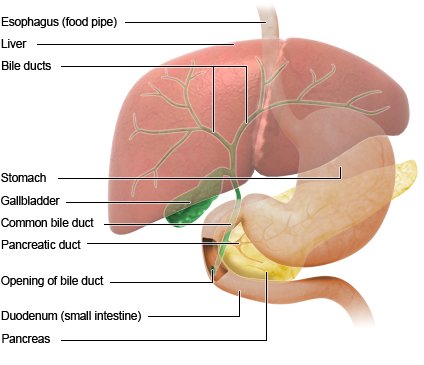The bile produced by the liver flows directly into the small intestine during a meal. Between meals, when there's no fat that needs to be digested, most of the bile flows into the gallbladder instead, where it is concentrated and stored. The gallbladder usually holds about 30 to 80 milliliters (about 1 to 2.7 fluid ounces) of fluid. When we eat fatty foods, the gallbladder contracts and squeezes bile through the bile duct. The bile is mixed into the semi-digested food in the small intestine.
Bile is mainly made up of water, but also has bile salts, cholesterol, certain fats (lecithin) and bile pigments in it. The main bile pigment, bilirubin, is made when red blood cells are broken down in the liver. Bilirubin is what makes urine (pee) yellow and stool (poop) brown.
Bile salts break down larger fat globules in food into small droplets of fat. Smaller fat droplets are easier for the digestive enzymes from the pancreas to process and break down. The bile salts also help the cells in the bowel to absorb these fat droplets.

